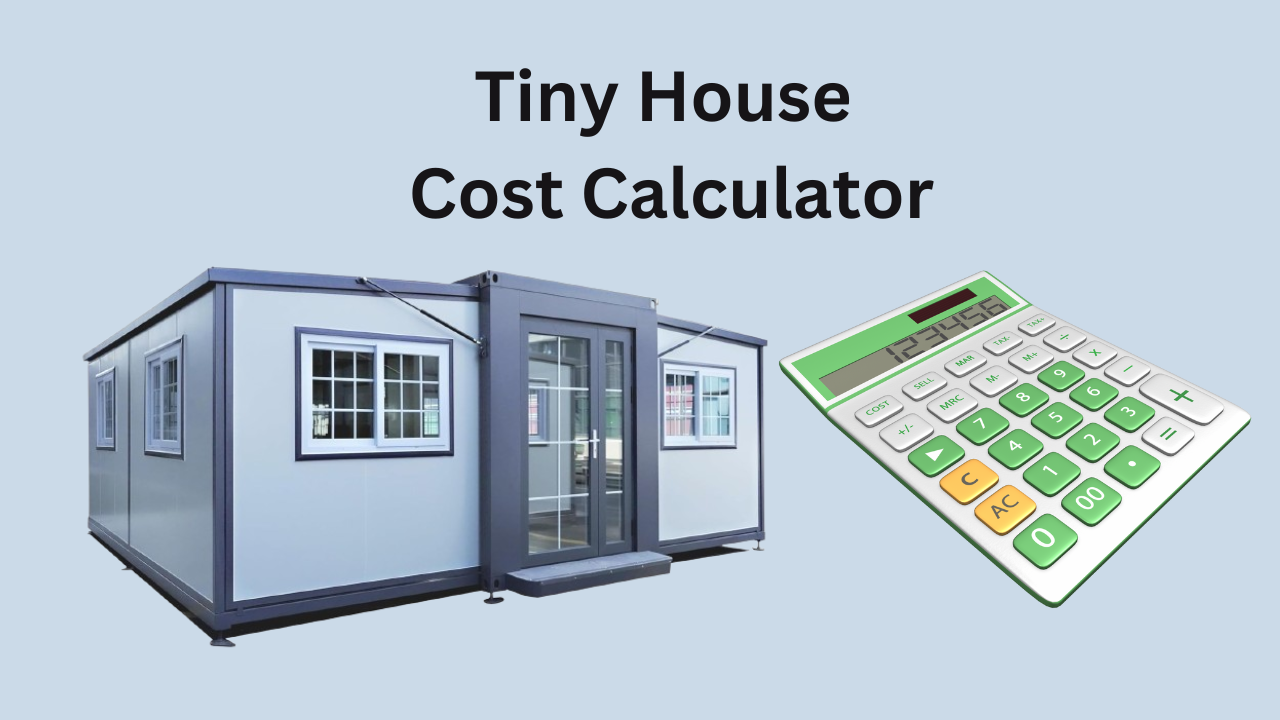Welcome to our comprehensive guide on understanding the costs associated with tiny houses. Whether you’re a minimalist enthusiast, an eco-conscious individual, or simply looking to downsize, tiny houses offer a unique housing solution. In this guide, we’ll delve into the intricacies of estimating the cost of a tiny house, including a detailed breakdown of factors and an introduction to our handy tool, the “Tiny House Cost Calculator.”
Use Tiny House Cost Calculator
Understanding Tiny House Costs – Factors Affecting Tiny House Costs
Size Matters: Square Footage and Cost One of the primary factors influencing the cost of a tiny house is its size. Typically, tiny houses range from 100 to 400 square feet, with variations in width and length. Our “Tiny House Cost Calculator” simplifies this process by allowing you to input the width and length of your tiny house, instantly providing you with the covered area in square feet.

Material Selection: Quality and Cost The choice of materials significantly impacts the overall cost of a tiny house. Opting for high-quality, sustainable materials may initially incur a higher cost but can lead to long-term savings through durability and energy efficiency.
Customization and Features: Personalization and Additional Costs Customization options such as built-in furniture, solar panels, and high-tech appliances can elevate both the functionality and cost of a tiny house. Our calculator simplifies cost estimation by providing a base cost per square foot, allowing you to adjust for customization as needed.
Labor and Construction: DIY vs. Professional Construction Deciding whether to build your tiny house yourself or hire professionals affects overall costs. DIY projects may save on labor expenses but require significant time and skill. Conversely, professional construction ensures quality but comes with higher upfront costs.
Using the Tiny House Cost Calculator: How to Utilize Our Tool Our “Tiny House Cost Calculator” streamlines the estimation process, making it easier for you to budget and plan your tiny house project. Simply enter the width and length of your desired tiny house, and click calculate. The tool instantly provides you with the covered area in square feet and estimates the total cost by multiplying the square footage by $50, based on industry averages.
FAQs About Tiny Houses:
What is a tiny house, and why are they gaining popularity?
Tiny houses are small, compact dwellings typically ranging from 100 to 400 square feet. They’re gaining popularity due to their affordability, sustainability, and minimalistic lifestyle they promote.
Are tiny houses legal?
Laws regarding tiny houses vary by location. While some areas have specific regulations for tiny houses, others may require adherence to standard housing codes. It’s essential to research local zoning laws and building codes before embarking on a tiny house project.
Can I finance a tiny house?
Yes, financing options for tiny houses exist, including personal loans, RV loans, and specialized tiny house loans. However, eligibility and terms may vary based on factors such as credit history and the intended use of the tiny house.
Conclusion:
In conclusion, estimating the cost of a tiny house involves considering various factors such as size, materials, customization, and labor. Our “Tiny House Cost Calculator” simplifies this process, empowering you to make informed decisions about your tiny house project. Whether you’re dreaming of a minimalist retreat or a sustainable living space, understanding the costs involved is the first step towards realizing your tiny house dreams.

